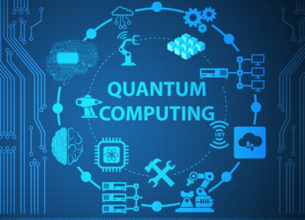EDGE COMPUTING
31, Oct 2019

Prelims level : Science & Technology
Mains level : GS-III Science & Technology
Why in News?
- Cloud computing — by which remote servers hosted on the Internet store and process data, rather than local servers or personal computers — is ready to move to the next level i.e. ‘Edge Computing’.
Cloud Computing:
- Cloud computing is the on-demand availability of computer system resources, especially data storage and computing power, without direct active management by the user.
- The term is generally used to describe data centres available to many users over the Internet.
Why need an upgrade?
- Amazon, Microsoft, and Alphabet, the parent company of Google — the technology giants that provide cloud computing infrastructure to major corporates and governments.
- They want to leverage 5G wireless technology and artificial intelligence to enable faster response times, lower latency (ability to process very high volumes of data with minimal delay), and simplified maintenance in computing.
- This is where Edge Computing comes in — which many see as an extension to the cloud, but which is, in fact, different in several basic ways.
- By 2025 companies will generate and process more than 75% of their data outside of traditional centralised data centres — that is, at the “edge” of the cloud.
Edge Computing:
- Edge computing enables data to be analysed, processed and transferred at the edge of a network.
- The idea is to analyse data locally, closer to where it is stored, in real-time without latency, rather than send it far away to a centralised data centre.
- So whether you are streaming a video or accessing a library of video games in the cloud, edge computing allows for quicker data processing and content delivery.
How is Edge Computing different from cloud computing?
- The basic difference between edge computing and cloud computing lies in the place where the data processing takes place.
- At the moment, the existing Internet of Things (IoT) systems performs all of their computations in the cloud using data centres.
- Edge computing, on the other hand, essentially manages the massive amounts of data generated by IoT devices by storing and processing data locally.
- That data doesn’t need to be sent over a network as soon as it processed; only important data is sent — therefore, an edge computing network reduces the amount of data that travels over the network.
- Experts believe the true potential of edge computing will become apparent when 5G networks go mainstream in a year from now.
- Users will be able to enjoy consistent connectivity without even realizing it.
- Nvidia, one of the biggest players in the design and manufacture of graphics and AI acceleration hardware, has just announced its EGX edge computing platform.
- This will help telecom operators adopt 5G networks capable of supporting edge workloads.








